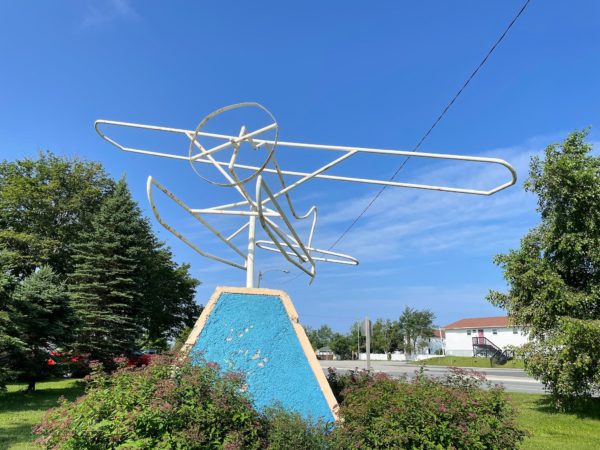
Well rested and with the truck’s vents blowing cool and conditioned air, we moved an hour on up the road to Gander. Located on a ‘Great Circle’ route between North America and Europe, Gander was built to be an airport town for refueling trans-Atlantic flights, and for a time was the largest and busiest airport in the world. It has lately become well known for its townwide hospitality when planes were unexpectedly grounded there on September 11, 2001. On that day, North American airspace was closed and all planes were required to land. Within a few hours, 38 planes landed in this town of (then) 9,300, unloading 7,000 unexpected guest from 95 different countries for an unknown duration. It ended up being 5 days. Among locals, the stayover is now known as ‘9/12,’ and the guests are called ‘Come From Away’s (CFAs). We were interested to see this historic town. Maybe we’d have a chance to talk to some of the kind people and thank them for their generosity.
We’d also hoped we could see the award-winning Broadway musical Come From Away on its home turf in Gander, where it is now playing. However, the show had quickly and emphatically sold out for its limited run. The good news? Tickets are already on sale for 2024! Oh well, we’ll catch it somewhere, sometime.
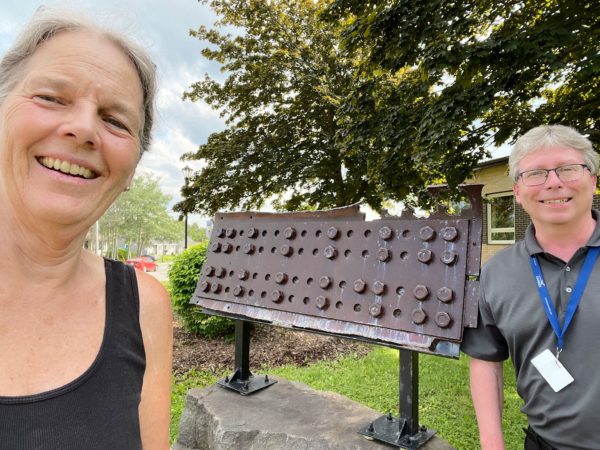
Though I failed to score tickets, I’d done a lot of chatting with folks in the town about the town and the play and related points of interest. So our first stop was a visit with Brian, Tourism Development Officer for the town of Gander. He welcomed us to town and highlighted things we should see, including the new Come From Away interpretive trail – 12 sites throughout town with signs denoting their special significance during 9/12. One of the signs was right outside his office in the Town Hall. Among many other gifts of appreciation, Gander had been provided with a piece of structural metal from the World Trade Center that has been thoughtfully mounted to a chunk of local rock. The display was Brian’s design. The rock signifies Newfoundland (which is known colloquially as The Rock), and the shape of this rock was chosen to invite visitors to sit and ponder the events. Brian also shared with me many stories from his perspective of those 5 days, his pride in his fellow townspeople apparent throughout.
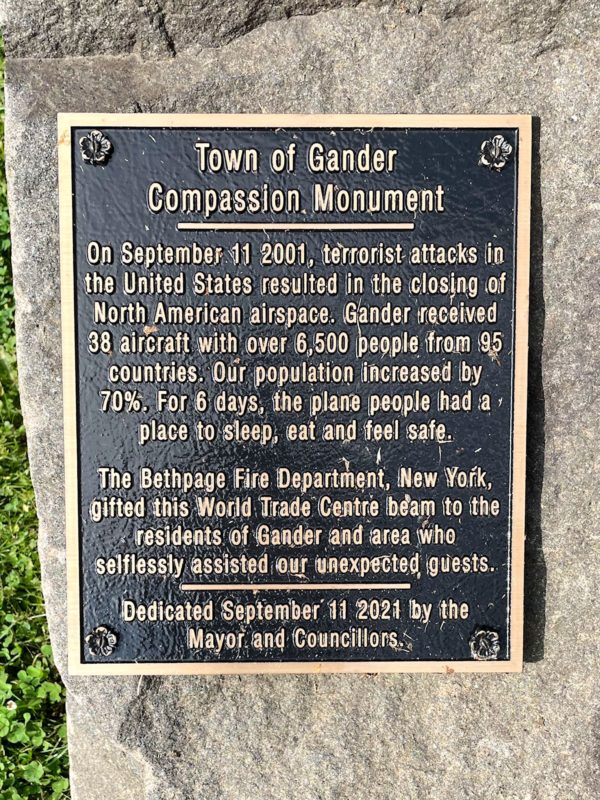

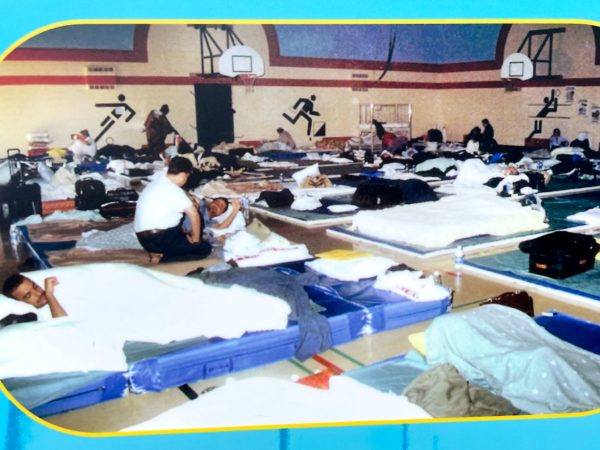
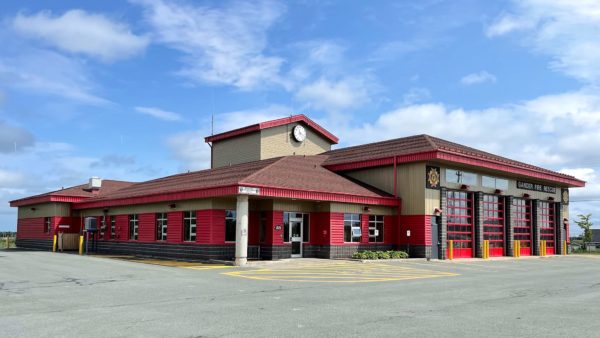
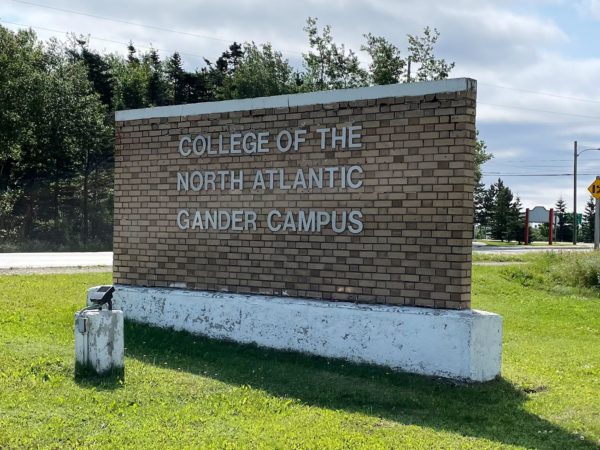
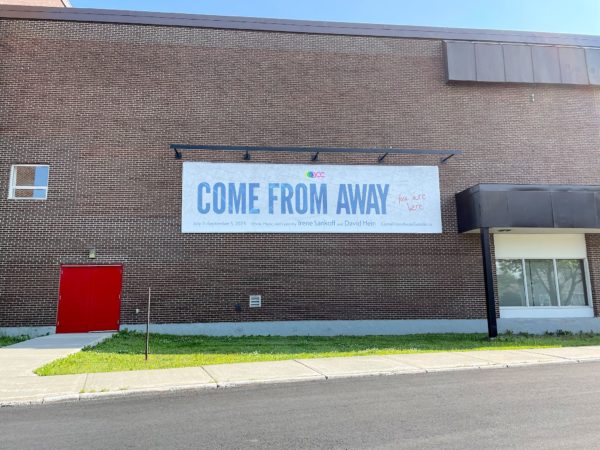
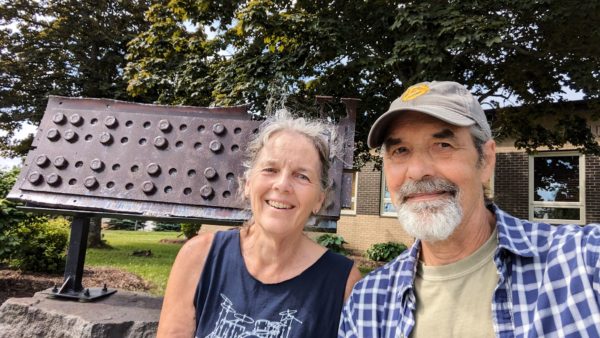
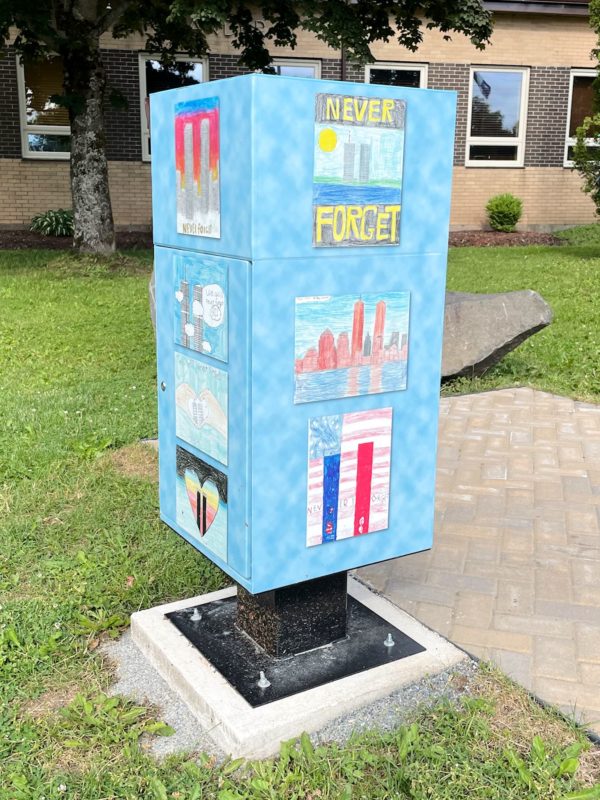
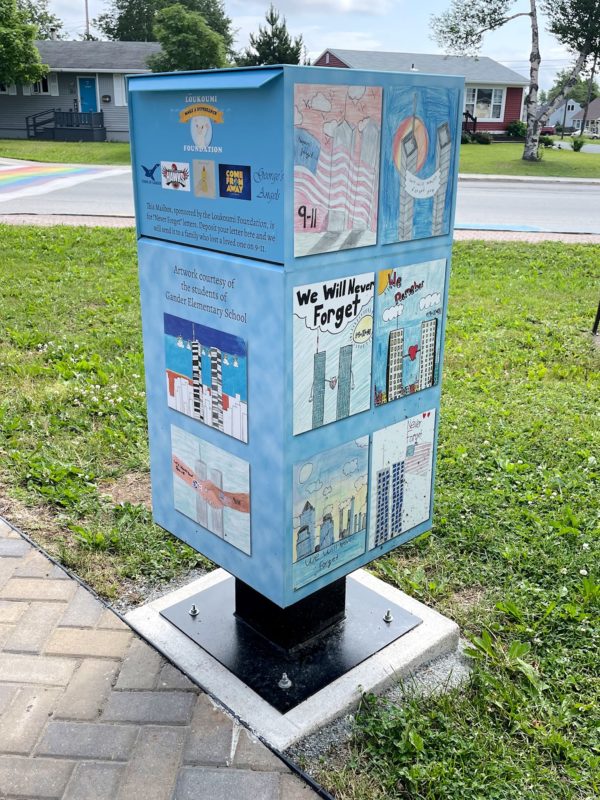
Here’re a few highlights based on conversation with Brian and our urban walking tour of the interpretive signs:
- While planes were being rerouted, Gander set up a command center to manage all the anticipated needs of a town that would almost double in size in hours. They first focused on food and lodging. Yet, the first thing the CFAs wanted when they deplaned was a phone. The phone company immediately set up tables on the sidewalk with 25 phones – the most they could safely provide with their available circuits. Businesses and museums and other locations invited CFAs to use their phones, all with time limits to allow all 7000 CFAs to inform their loved ones where they were – signs said you are in Gander, Newfoundland – and that they were ok.
- Large spaces – school gymnasiums, community centers, the fire station, etc. – were converted into sleeping spaces. The locals rounded up all of their spare mattresses, sleeping pads, blow up floaties and spare linen by the truckload to be used by the CFAs.
- Having spent the past 3 weeks in Newfoundland, we were well aware that we’re on an island made of rock. There’s plenty of fish here, and no food grows here (beyond the roadside gardens). All food needs to be imported onto the island. How’d they feed this many guests? Stores called their suppliers asking them to send list of items in huge quantities to Gander. These trucks were given priority on the ferries. By the time they arrived, the local hockey arena (this is Canada…) was converted into the world’s largest cooler.
- The Salvation Army, Red Cross and several schools prepared and delivered food. The College of the North Atlantic included gym space for sleeping as well as students from their culinary program to pitch in with the food.
- The local SPCA converted an airport hanger into a pet motel, feeding, walking and caring for 11 dogs, 9 cats and 2 rare bonabo chimpanzees.
- Just awaiting the ok for planes to fly again, the CFAs needed entertainment. Local venues, including the Atlantic Aviation Museum, extended their hours and waived their fees for the guests.
- Among the CFAs, six kids had birthdays during the their 5 days in Gander. The local food coop arranged for a cake to be made – 1.2 metres/4 feet by 2.4 metres/8 feet (think of a sheet of plywood) – to feed all the CFAs during a birthday party.
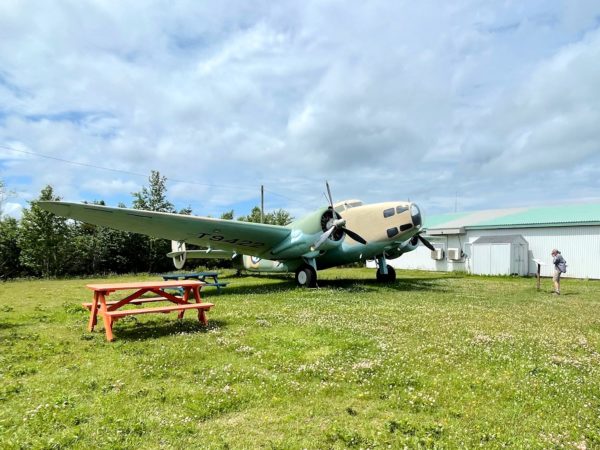
We also visited the North Atlantic Aviation Museum, which is home to several historic aircraft and an exhibition hall devoted to the making of Gander’s airport and its history. In 1935, the British wanted an airport close enough to allow trans-Atlantic flight. Newfoundland was the closest North American land mass. Initially, 40 men (and their families) were sent to a relatively level spot in the boreal forest, just far enough from shore to be free from constant fog. Their number soon grew to 900 as they cleared enough space for the runway and built the airport and its essential buildings. The first plane landed at the new Gander airport in 1938. At the time, it was the largest airport in the world. During WWII, both the Americans and Canadians realized the value of the airport’s location for flights to Europe. They also both realized the risk if the Gander airport fell into enemy hands – air access to all of North America. The Americans greatly enlarged the airport and staged fighter planes for defensive purposes. The airport was also used as a departure point for ferrying nearly 20,000 American-built fighter planes to the UK, in parallel with similar activity in Goose Bay.
Brian mentioned he was amazed that so many people would be so thankful and surprised at how the town of Gander rallied to help. He mentioned the townspeople were only doing what was the right thing to do. He wondered out loud how other communities would have handled the situation. I shared my thought that I imagined they would respond as well in similar circumstances, however, truly hoped we’d never have the opportunity to test that thought.
For anyone who’s interested, more Gander and North American Aviation Museum pix…
